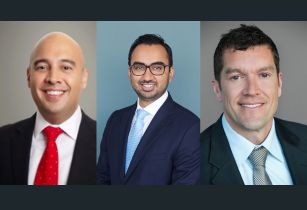The value of commissioned projects has reached US$250bn, according to the annual Saudi Giga Projects Report from international real estate consultancy Knight Frank
Since the start of Saudi Arabia's National Transformation Plan in 2016, the total value of real estate and infrastructure projects that have been launched but have not yet been completed has exceeded US$ 1.25 trillion. With US$687bn in real estate projects anticipated to be completed by the end of the decade, Western Saudi Arabia continues to be a crucial component of the Kingdom's transformational ambition.
Faisal Durrani, partner, head of research, Middle East & North Africa said, “Arguably one of, if not the most expansive real estate development programs ever seen in the world is gathering pace in Saudi Arabia as the 2030 deadline nears to realise Vision 2030. The volume of residential units planned has risen to 660,000 units, up 30% in the last 12 months, which will come as welcome news to house hunters prevented by the recent spike in values, which has underpinned a nation-wide decline in the volume of homes being sold. That being said, affordability is still a key hurdle for many buyers and so price points for the new inventory will be critical to reigniting domestic demand.
“Separately, the office pipeline is steady at 6 million sqm. This figure has of course been influenced by the 300,000 sqm of office projects that have been completed since last Autumn. The swelling of the office pipeline is set against a backdrop of a severe shortage of prime Grade A space in cities such as Riyadh, which stands in stark contrast to other global centres where occupancy levels still trail pre-pandemic levels. Elsewhere in the commercial market, 5.3 million sqm of retail space is now planned, with a further 289,000 hotel rooms that will go some way to supporting Saudi Arabia’s goal of hosting 100 million visitors by 2030, up from around 17 million last year, which made the kingdom the 14th most visited nation in the world.”
Harmen de Jong, partner – head of strategy & consultancy, Saudi Arabia, added, “The western half of the kingdom contains the highest concentration of headline grabbing projects in the country, including of course NEOM, the US$500bn supercity. Over the course of the last year, various subcomponents in NEOM have been revealed, including Trojena, host location for the 2030 Asian Games and Sindalah, the luxury island and hospitality destination in the Red Sea, which will be the first of NEOM’s projects to materialise. NEOM overall is also progressing rapidly, with US$70bn of projects now awarded, 45% of which has been completed.
“The challenge for the nation’s giga project developers will be to cater to and appeal to domestic buyers, two-thirds of whom we know through our 2023 Saudi Report to have home budgets of under US$400,050. With most giga projects expected to launch residential product at over US$1 million, bridging this gap between demand and expectations will undoubtedly emerge as a key consideration going forward”.
The Saudi capital of Riyadh is also a pivotal focus point for the country’s transformation and currently accounts for 18% of all real estate and development projects underway, totalling some US$229bn. This includes plans for over 241,000 homes by 2030, in addition to 3.6m sqm of office space, the latter of course will come as welcome news to occupiers faced with a severe supply shortage that has helped to lift Grade A occupancy levels to 98%, on average.
King Salman Park is one of the most advanced giga projects in the city, with US$8.8bn of contracts awarded in the US$9bn development as it moves closer to completion in 2027, complete with over 12,000 homes, more than 600,000 sqm of office space and over half a million sqms of retail offerings. Aside from the giga projects that make headlines all across the kingdom, Knight Frank reported that a greater focus is being made on the welfare of Saudi Arabia's citizens through the creation and maintenance of top-notch urban settings.
This includes the US$266 million Qiddiya Coast theme park, the US$500 million Riyadh Sports Boulevard, and the US$23 billion 'Green Riyadh' project, which aims to turn the Saudi capital into a lush metropolis by planting 7.5 million trees. Qiddiya has also recently announced plans to expand to Jeddah. The 650,000 sqm Amanat Al Sharqiya project in Dammam would revitalise the city's corniche.
Shehzad Jamal, partner – head of strategy and consultancy - Real Estate, Healthcare & Education, MEA explained, “The emphasis on wellbeing extends to the 24,000 hospital beds planned, which is set to cost US$39.5bn, US$27bn of which is planned for Riyadh Province alone. Furthermore, 60 new educational institutions are being built at a cost of nearly US$6.3bn. Undoubtedly this focus on improving the liveability of cities across the Kingdom will contribute not only to improving the lives of citizens and residents, but also positively influence the country’s attractiveness to international talent and their families.”





